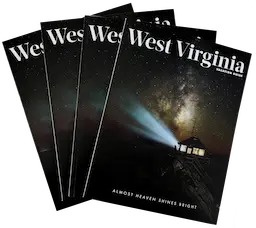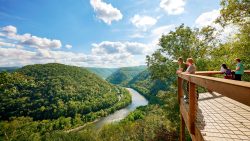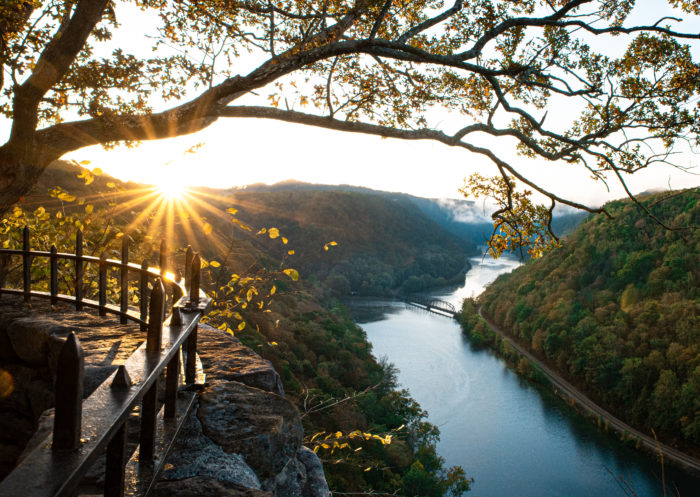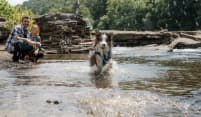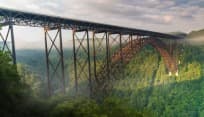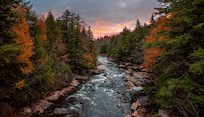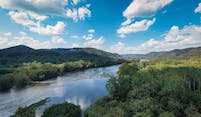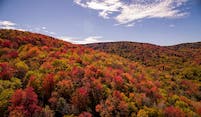Meet the whitewater pioneers of the mighty Cheat River
In West Virginia’s remote Allegheny Mountains, the mighty Cheat River flows north for 162 miles. Whitewater pioneers charted its thrashing rapids more than 60 years ago, and the river is still a destination for river rats who want a wild, scenic experience.
Some of those pioneers still scratch out a living along the river’s scoured banks, happy to exist quietly with the waterway that has guided them for decades. Jim Snyder and Charlie Walbridge are 2 of the Cheat’s living legends, and you can often find them prowling its banks searching for their daily aquatic fix.
Jim, 62, lives with his wife in a Yankee frame-style home in Ruthbelle, a small group of homes in the suburbs of Albright, a tiny river town upstream from the Cheat Canyon. According to Jim, Ruthbelle is likely the oldest community in the Cheat watershed.
Jim was one of the original raft guides on the Cheat’s legendary whitewater. He guided one of the very first commercial trips down the Cheat Canyon, a 7-mile stretch of class IV-V whitewater that has a reputation for being rougher than its Appalachian siblings of the New and Youghiogheny Rivers.
“Commercially, the Cheat is characterized by the fact 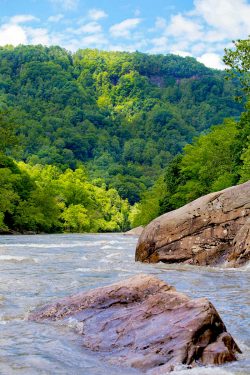 that it doesn’t have a dam that regulates its flow,” Jim said. “There are different lines in all the rapids at different flows. It takes really good guides to guide the Canyon. It’s a more technical kind of rafting with a tougher breed of customer.”
that it doesn’t have a dam that regulates its flow,” Jim said. “There are different lines in all the rapids at different flows. It takes really good guides to guide the Canyon. It’s a more technical kind of rafting with a tougher breed of customer.”
Charlie was another paddler who guided brave souls down the Cheat in those early days. Like Jim, Charlie (at 68) still runs the wild rapids of the Canyon in a C1, a whitewater canoe where the paddler is braced in a low kneeling position with a single-bladed paddle.
According to Charlie, the first trip down the Cheat came in 1954, when John Berry led a group on a 2-day trip down the river at the rowdy level of 2 feet. Activity was somewhat dormant until 1968, when rafting companies like Mountain Streams and Trails (MST) started commercializing on the Cheat’s adventurous rapids. Charlie’s first trip down the Cheat was in 1971, and he started guiding for MST in 1975 when the Cheat’s booming whitewater industry was in its glory days.
Charlie said the river saw up to 40,000 guests per year, with MST alone running 8-9 trips per day, not to mention the nearly 20 other companies that were out there.
“The Cheat is West Virginia’s best-kept secret,” he said. “It’s a gorgeous river with so many personalities. When it’s low the rapids are picky and long and interesting; when it’s high, it’s a romper. It’s definitely not a tourist area. It’s not a National Park. There’s not a close town with all kinds of restaurants and motels. It’s a little off the beaten track… it gives you a look at rafting the way it was 30 years ago.”
Although they’re no longer guiding boats, Jim and Charlie are very active in the tight-knit Cheat River community.
As a master craftsman of wooden paddles and builder of squirt boats (small kayaks), Jim designed his first fiberglass kayak in 1980 with the goal of performing a cartwheel in a standing wave.
“Ultimately, I did get the first cartwheels in flatwater in January of 1983— that’s my claim to fame,” he said. “Even though there were a lot of contributors to the sport over the years, Albright is where squirt boating got its start 35 years ago.”
Squirt boating set a new performance standard for boats, and became popular as what Jim called a “rodeo sport.” Seeing the acrobatic moves squirt boaters make, it’s not difficult to see them as aquatic cowboys.
Jim’s beautiful wooden paddles are coveted by professional kayakers and river guides alike. He apprenticed under paddle maker Keith Backlund in the 1970s. In a nod to longevity, Charlie still uses his original Backlund-made paddle.
Jim estimated he’s crafted more than 2,000 paddles that have propelled boaters down rivers around the globe.
“Some people use them for expeditions; professional raft guides like them because they last a long time and are easier on the body,” he said. “Serious kayakers who like something stronger than plastic want a wood paddle. The aesthetics are better. They look better, they feel better.”
Retired from a life of in the whitewater industry, Charlie, who lives with his wife in Bruceton Mills, has been an active board member of Friends of the Cheat (FOC), a watershed advocacy group that works to promote the natural and recreational opportunities of the Cheat, since 2000.
With more than 80 years of combined experience with the Cheat, Jim and Charlie have seen it all. The 2 have passed their skill and wisdom down to the next generation of hardscrabble river rats who choose the Cheat as their home. While the years may separate those generations, they are connected by the adventurous Appalachian values of grit and determination.
This post was last updated on March 16, 2022
